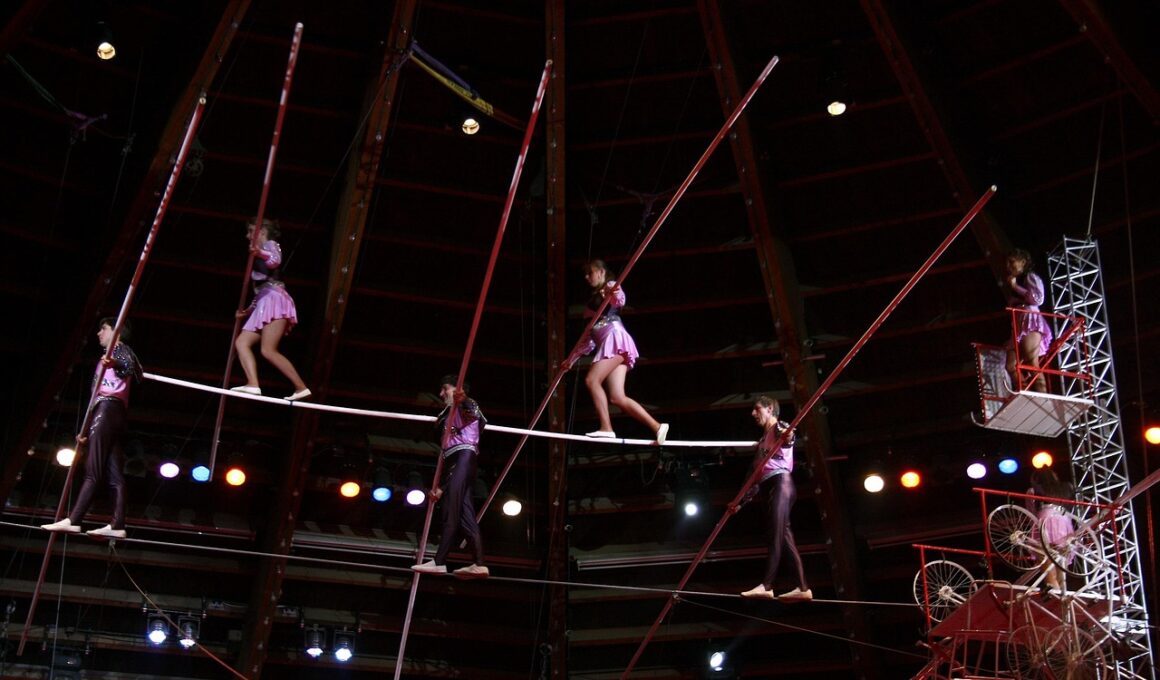The Role of Reflexes in Coordination and Balance
Balance and coordination are fundamental skills that play a crucial role in our daily lives. They enable us to perform various activities, from walking and running to playing sports and dancing. Reflexes contribute significantly to maintaining balance by allowing the body to respond swiftly to changes in the environment. When a person encounters a sudden shift, reflexes help to stabilize the body, preventing falls or injuries. The integration of sensory information from the eyes, ears, and muscles provides essential input for the central nervous system. This information allows our brain to assess our body position in space, making necessary adjustments accordingly. Effective balance coordination depends on the harmonious interaction between biological systems. The brain processes this data quickly, allowing for immediate responses. Additionally, the strength and flexibility of the muscles are vital in this process. Conditioning through exercises such as yoga or Pilates helps improve these attributes. Through effective training, individuals can enhance their reflexes, which in turn promotes better balance and coordination. Therefore, understanding the effects of reflexes in this context is essential for optimizing performance across various physical activities and minimizing injury risk.
To comprehend the intricacies of balance and coordination, it’s essential to explore the concept of reflexes. Reflexes are automatic responses that occur without conscious thought, enabling quick reactions to stimuli. For instance, when a person loses their balance, reflexes trigger immediate muscle contractions to stabilize the body. These actions are typically processed through neural pathways that bypass the brain, allowing for faster responses. In the context of sports, athletes rely heavily on their reflexes to maintain balance during dynamic movements, such as jumping or pivoting. The development of these reflex responses can be enhanced through specialized training. Athletes, dancers, and performers often engage in drill exercises to sharpen their reflexes, which directly impacts their overall coordination. Furthermore, factors such as age and health can influence reflex efficiency. Young individuals generally possess faster reflexes compared to older adults. Regular coordination exercises can counteract this decline, helping individuals maintain their agility and reaction time. Incorporating activities like martial arts or balance-focused workouts not only strengthens reflexes but also reinforces the brain-body connection, further improving both balance and coordination skills across various physical activities.
Another dimension to consider is the role of proprioception in balance and coordination. Proprioception refers to the body’s ability to perceive its position and movement in space. This sensory feedback is critical for effective coordination and balance. It allows individuals to control their movements and adjust their balance by sensing the position of their limbs and joints. Proprioceptors are specialized sensors located in muscles and tendons that provide information about body position. By training these proprioceptors, individuals can significantly enhance their balance skills. Activities such as dancing, gymnastics, and balance exercises can improve proprioception. This enhanced awareness can lead to better performance in sports and day-to-day activities. For example, when bicycling or walking on uneven terrain, strong proprioceptive abilities help prevent falls and maintain stability. Additionally, engaging in balance-focused drills can lead to increased body awareness, resulting in improved posture and coordination. Incorporating proprioceptive training into regular fitness routines can benefit people of all ages. As a result, awareness of one’s body position becomes instinctual, further aiding in maintaining balance in various challenging scenarios.
Reflexes and Their Impact on Athletic Performance
In the realm of athletics, reflexes significantly enhance performance by facilitating improved coordination and balance. Athletes prepare for competitions through intense training regimens that target these reflexes. For instance, basketball players develop quick responses to shifts in movement, allowing them to dodge opponents or make precise shots. Similarly, sprinters activate fast-twitch muscle fibers for explosive starts and quick changes in motion. Such agility is a product of refined reflexes that enable athletes to maintain proper body positioning. Coaches emphasize the need for reflex training in their regimes, utilizing drills that simulate game scenarios. This method ensures athletes practice quick decision-making while focusing on their balance. Athletes who regularly condition their reflexes tend to have better stability during their performances because their bodies can efficiently handle external perturbations. Moreover, a heightened sense of timing and coordination allows for smoother transitions between skills or movements required in various sports. Overall, the cultivation of reflexes is integral for enhancing performance. The synergy between reflexes, coordination, and balance contributes to an athlete’s ability to compete effectively, showcasing the importance of enhancing these fundamental skills in the sports arena.
Furthermore, technology has begun to play a pivotal role in improving reflexes and enhancing balance techniques. Advanced tools, such as balance boards and proprioceptive trainers, are increasingly utilized in sports training. These devices facilitate drills that challenge muscular stability and improve reaction times. Coaches often integrate high-tech solutions into training programs to collect data on an athlete’s balance performance. Smart wearables can track movement patterns, revealing data that highlights areas for improvement. This information enables athletes to focus their training on specific weaknesses, optimizing performance outcomes. Virtual reality (VR) environments also provide an immersive experience for developing coordination skills. Such technology can present scenarios where quick reflexes are necessary, preparing athletes for real-life situations. The incorporation of wearable technology in monitoring and improving reflex efficiency is progressively transforming athletic training techniques. By doing this, athletes engage in more personalized workouts tailored to foster their coordination and balance needs. Therefore, leveraging these technological advancements is a game-changer in developing reflexes and overall athletic performance, highlighting the synergy of innovation and physical training in achieving success.
Additionally, there is a growing awareness of the interplay between reflexes and mental focus in balancing skills. Mental processing plays a crucial role in achieving coordination; athletes must not only physically execute movements but also mentally assess their environment. When an individual is distracted or mentally fatigued, their reflexes can lag, resulting in compromised balance. Training involves not only physical aspects but also mental components to enhance focus and concentration. Incorporating mindfulness techniques and cognitive exercises can fortify this connection. Mental imagery, for example, allows athletes to visualize their movements, thereby reinforcing tracking and execution skills in balance activities. Moreover, sports psychologists often emphasize the importance of maintaining mental clarity during performance. High levels of concentration can lead to improved reflex actions, translating to better coordination and balance. Therefore, maximizing both mental and physical training yields the best results. Coaches and practitioners are increasingly prioritizing mental conditioning alongside traditional physical training in character development. As a result, their athletes shape ultimately more competent performers capable of maintaining high levels of balance and coordination, despite the ever-evolving complexities of sports environments.
Conclusion: The Vital Link Between Reflexes, Coordination, and Balance
In conclusion, understanding the vital link between reflexes, coordination, and balance is essential for anyone looking to improve their physical performance. Reflexes serve as the backbone for maintaining stability. The capacity to swiftly react to changes in the environment is invaluable, especially in dynamic settings. From athletes to everyday individuals, refining reflexes is crucial. Incorporating activities that challenge balance and coordination develops strength and agility while enhancing overall health. Recognizing the importance of proprioception and mental focus complements physical training, allowing for holistic development. Additionally, embracing technological advancements can further enhance training efforts, providing athletes with personalized programs tailored to their needs. A comprehensive approach to balance and coordination training will reap benefits in various aspects of life. Ultimately, the interplay between reflexes and coordination emerges as key contributing elements that bolster both performance and safety. Thus, individuals must prioritize these skills. Fostering reflex efficiency, progression in coordination, and balance exercises sets the foundation for achieving personal and athletic goals. Embracing this knowledge can lead to enhanced well-being and performance levels throughout one’s endeavors.
The journey towards mastering balance and coordination is ongoing. By recognizing the integral role of reflexes, individuals can focus on training regimens that enhance their physical abilities. Practicing various exercises and activities allows for continuous growth in these areas, leading to improved overall performance and quality of life. Whether in sports or daily movements, cultivating balance and coordination yields lasting benefits, ensuring individuals can navigate their environments with confidence and agility.


